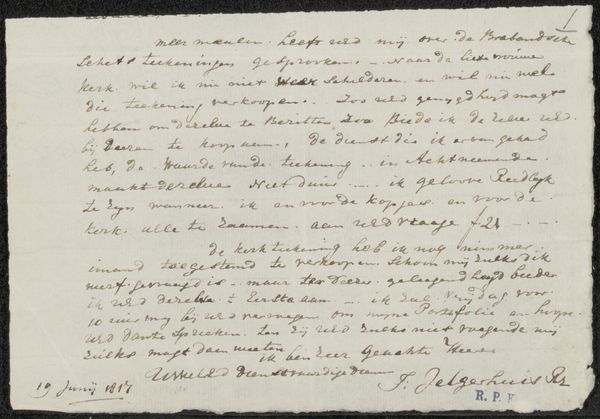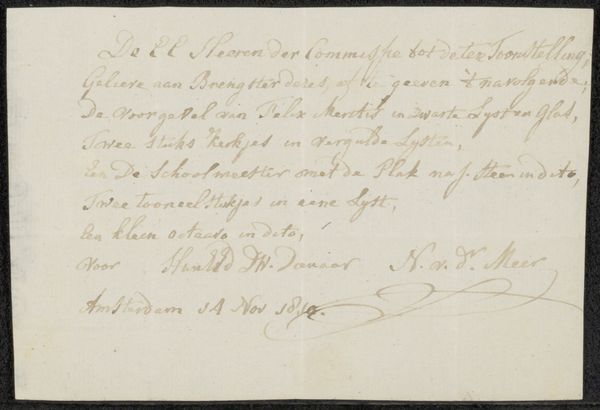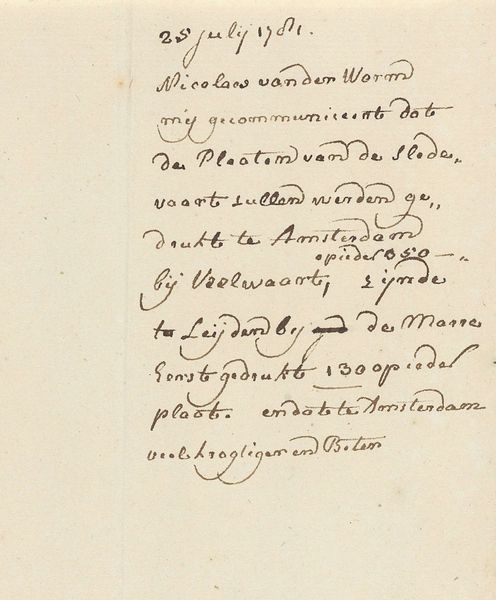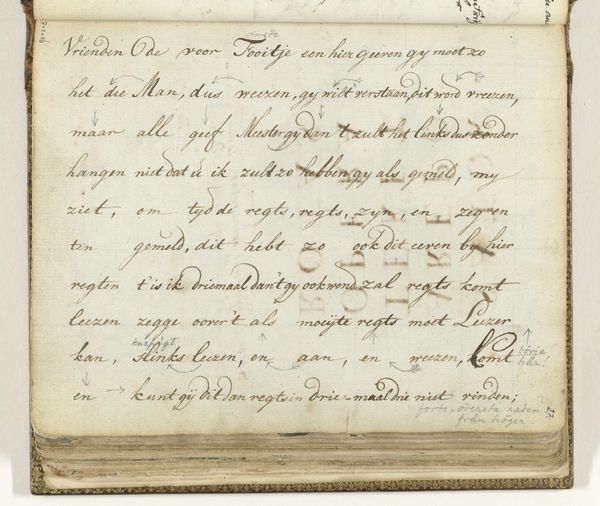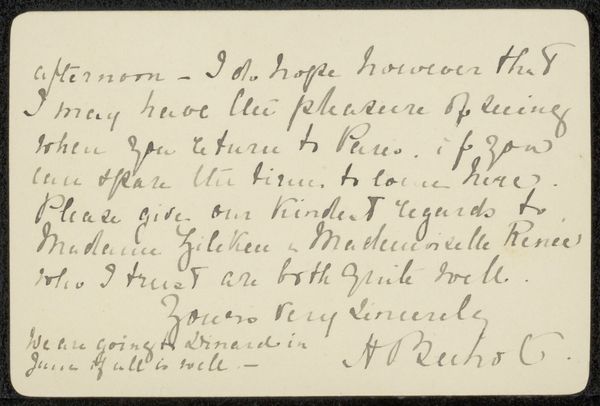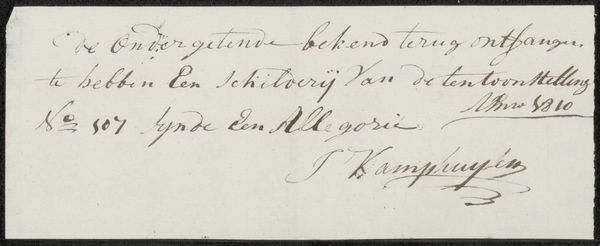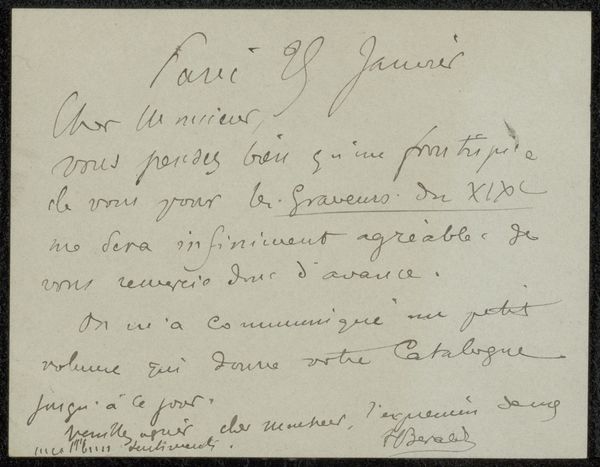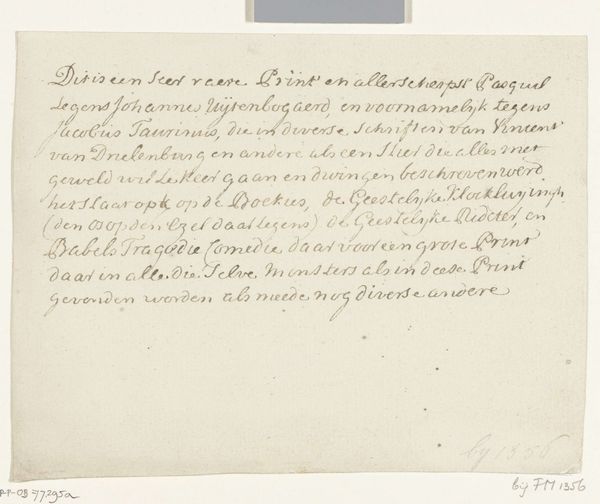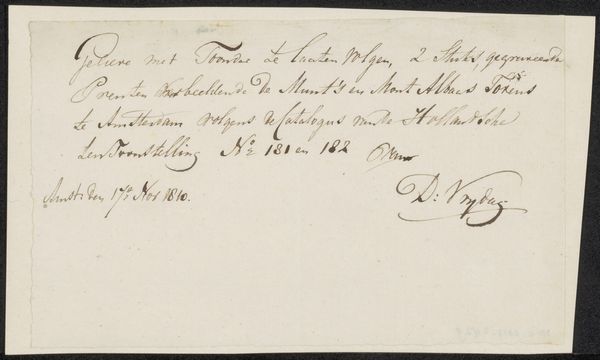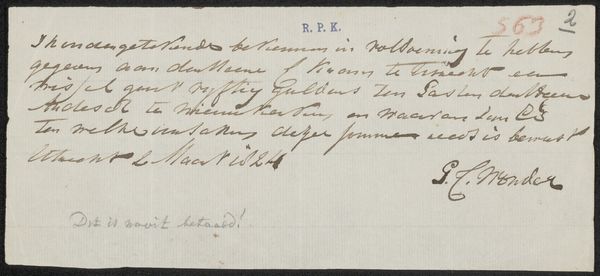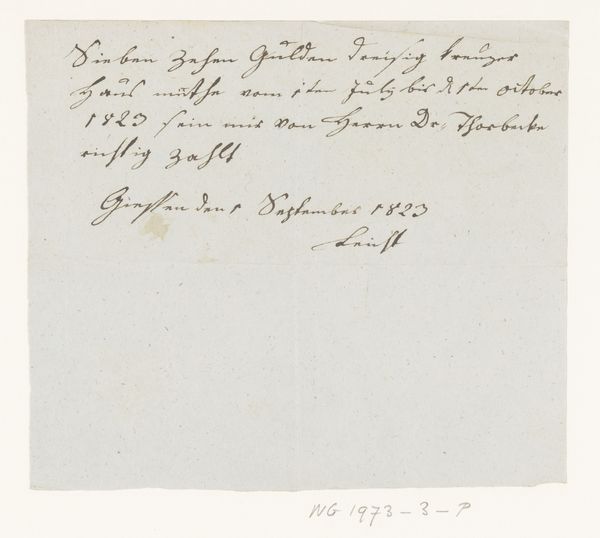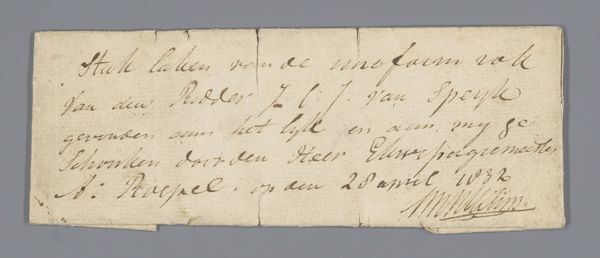
drawing, paper, ink
#
drawing
#
hand written
#
script typography
#
hand-lettering
#
baroque
#
hand drawn type
#
hand lettering
#
paper
#
ink
#
hand-written
#
hand-drawn typeface
#
fading type
#
handwritten font
#
calligraphy
#
small lettering
Dimensions: height 67 mm, width 147 mm
Copyright: Rijks Museum: Open Domain
Curator: Here we have an intriguing drawing from 1737, titled "Beschrijving van het verblijf van Willem IV te Breda," which translates to "Description of the Stay of William IV in Breda." It’s attributed to an anonymous artist and is rendered in ink on paper. Editor: It's surprisingly informal, almost like a handwritten note, despite documenting a royal visit. I get a sense of intimacy, as if we are peeking at someone’s personal diary entry about this grand event. Curator: Precisely. The material execution suggests a commissioned work meant to quickly record details rather than create a grand, imposing statement. Look closely, you can see variations in the ink's density. The paper's texture likely influenced how the ink settled, creating a tangible link to the physical act of writing. How the hand moves! The consumption of paper and ink as archival materials... Editor: I see what you mean. It disrupts the usual heroic narrative around royal figures. Instead, we see Willem IV’s visit filtered through the lens of local experience and crafted into a document. Was this intended for wide distribution or for private remembrance? The emphasis on "Heeren en Dames van het Hoff" and other high status visitors hints at its intended elite audience, which impacts the political context surrounding this event. Curator: The act of producing this drawing, and replicating similar ones, also highlights labor practices within 18th century print culture and bureaucratic administrations. Such forms needed a fast form of distribution that penmanship can facilitate, before other production became easier. The scale here reduces distance to the Crown—but keeps it just outside the grasps of those who labor away for the good of the nation. Editor: It definitely reveals a subtle interplay of power and observation. By documenting who attended Willem IV’s visit, the drawing immortalizes not just the ruler but also a specific social stratum. These lists of important figures have profound implication and ripple effects within and beyond the visit and beyond the event and time! The Baroque style is present, but stripped down for immediate communication. Curator: Absolutely, by paying attention to how and what it was produced for, we can understand production within societal norms that elevate labor as something worthwhile... Editor: This examination invites reflection on who gets to write history, what perspectives get privileged and what visual forms mediate our relationship with historical figures and narratives. This really asks more from the visitor beyond an immediate sense of who matters in royal narratives. Curator: Yes, from handwriting, to royal delegation, the document serves to illustrate so many facets that influence this event in 1737. Editor: Indeed! A fascinating document from a crucial visit.
Comments
No comments
Be the first to comment and join the conversation on the ultimate creative platform.
